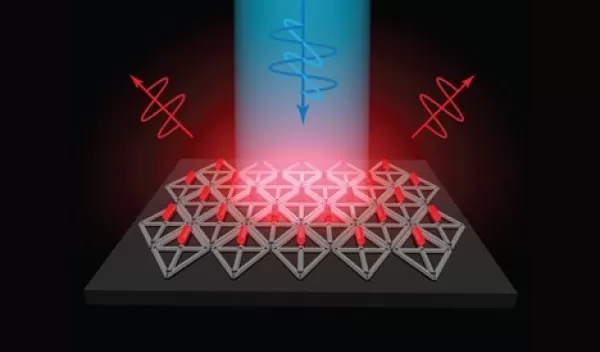
Arrays of quantum rods could enhance TVs or virtual reality devices
Flat-screen TVs that incorporate quantum dots are now commercially available, but it has been more difficult to create arrays of their elongated cousins, quantum rods, for commercial devices. Quantum rods can control both the polarization and color of light to generate 3D images for virtual reality devices. Using scaffolds made of folded DNA, engineers at the Massachusetts Institute of Technology have developed a precise way to assemble arrays of quantum rods.
By depositing quantum rods onto a DNA scaffold in a highly controlled way, the researchers can regulate the rods' orientation, a key factor in determining the polarization of light emitted by the array, thus making it easier to add depth and dimensionality to a virtual scene.
The research was funded in part by the U.S. National Science Foundation, and the paper is published in Science Advances.
Engineers, including Mark Bathe, an MIT biological engineer and the senior author of the new study, have led the design and fabrication of nanoscale structures made of DNA — also known as DNA origami — for the past 15 years. DNA, a highly stable and programmable molecule, is an ideal building material for tiny structures that could be used for a variety of applications, including delivering drugs, acting as biosensors, or forming scaffolds for light-harvesting materials.
Bathe's team tackled the challenge of arranging quantum rods into 2D arrays, difficult because the rods need to be aligned in the same direction. Limited success has been achieved by existing approaches that create aligned arrays of quantum rods using mechanical rubbing with a fabric or an electric field to sweep the rods into one direction.
The researchers devised a way to attach quantum rods to diamond-shaped DNA origami structures, which are then attached to a surface where they fit together like puzzle pieces.
As the first step in getting this approach to work, the researchers had to come up with a way to attach DNA strands to the quantum rods. The DNA strands then act like Velcro, helping the quantum rods stick to a DNA origami template, forming a thin film that coats a silicate surface.
The researchers now hope to create wafer-scale surfaces with etched patterns, which could allow them to adjust their design to device-scale arrangements of quantum rods for numerous applications beyond microLEDs or augmented reality/virtual reality.
"NSF funding is playing a pivotal role in unlocking new horizons in computing research that advance our understanding of science and open doors to revolutionary technologies," said Margaret Martonosi, NSF assistant director for Computer and Information Science and Engineering. "The recent success in harnessing DNA scaffolds to assemble quantum rod arrays showcases the transformative potential of such investments."
